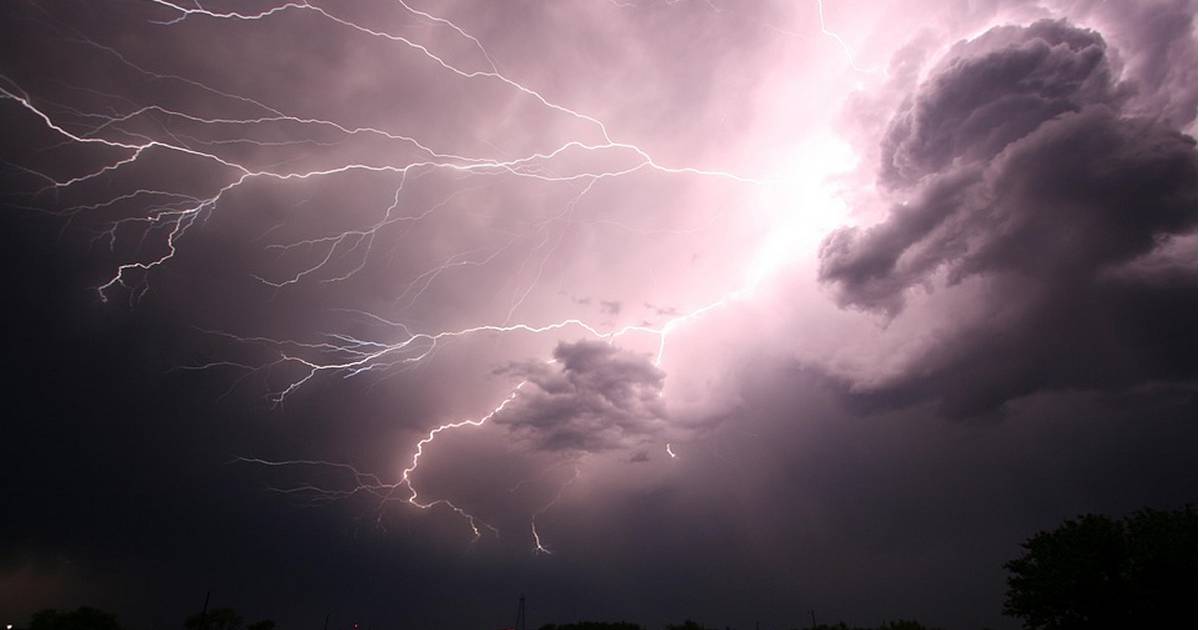
In the wake of damage wreaked by storms in South Australia on Saturday, some solar owners in areas not impacted by blackouts saw their systems shut down as electricity powers-that-be struggled to get on top of the situation. This may continue for a few days yet. Find out what’s happening and why.
423,000 lightning strikes were recorded in South Australia between the wee hours of Saturday morning through to 6pm that evening. While there was quite a bit of sparking going on before sunrise, the skies started looking particularly ominous this side of the Gulf around mid-morning.
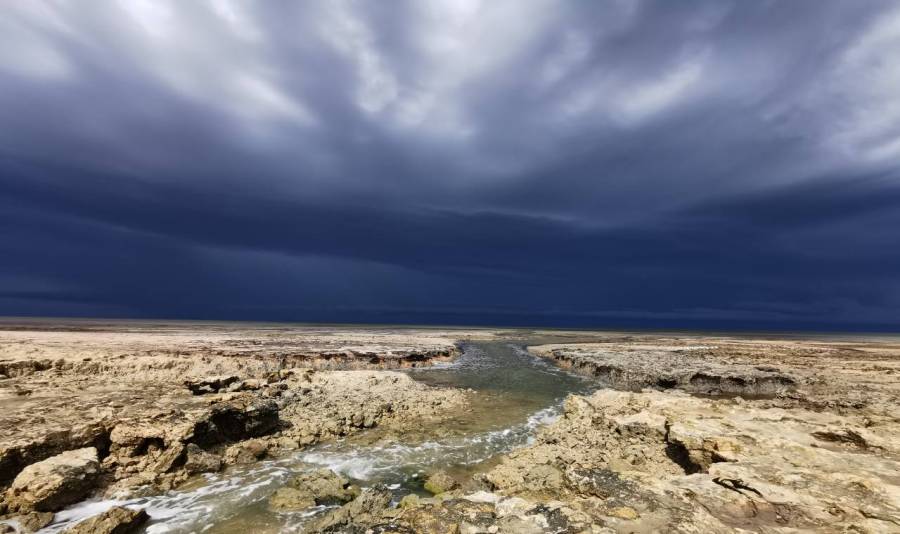
When taking that photo, I was torn between being awe-struck and fear of being struck by lightning. But what was happening then was just a warm-up for what was to come in the afternoon – a nasty squall line headed for Adelaide and surrounding regions that had already played havoc to the west.
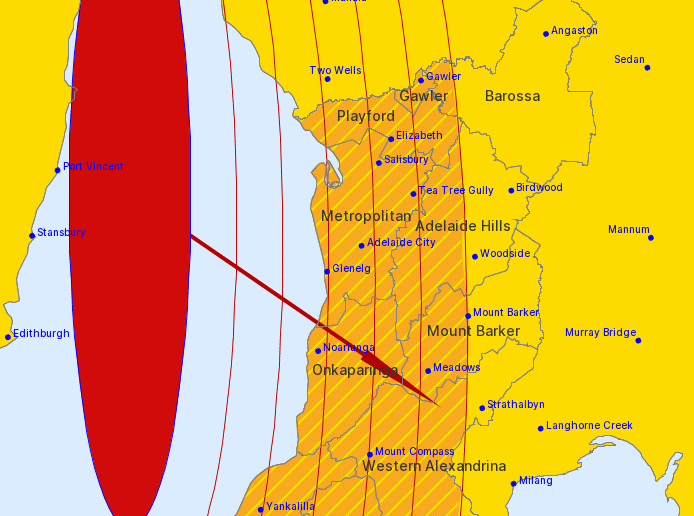
Image: BoM. There, I said it – *BoM*
The total number of electricity customers affected by blackouts from Saturday’s events has been reported at around 163,000. That works out to be approximately 18% of SAPN customers across the state. In terms of the number of people affected, I’ve seen an estimate of as many as 480,000 South Australians: ~27% of the state’s population.
Unfortunately, for many it wasn’t to be a short wait before the lights went back on – and tens of thousands (perhaps more) are still in the dark. As at 5AM this morning, SAPN indicated there were 220 outages affecting 33,514 customers. Windy conditions today aren’t helping.
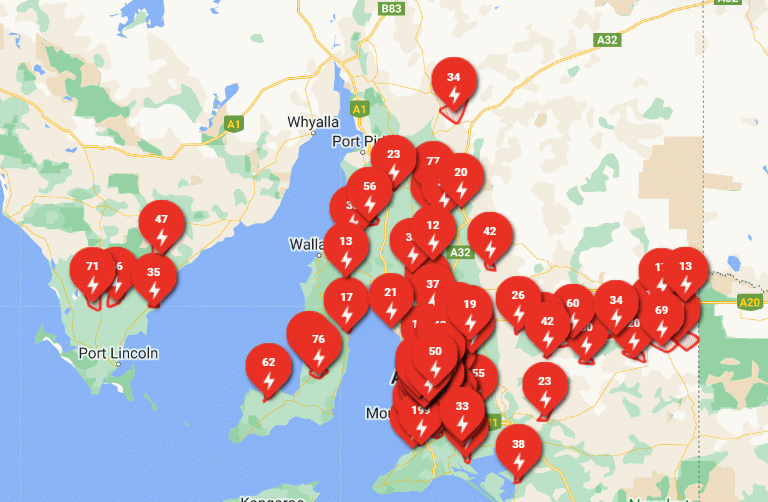
Adelaide still buried under blackout markers on Monday morning.
Some households may not have their power back on until Tuesday – or later.
To make things more challenging, at 4:40pm on Saturday, South Australia disconnected (islanded) from the National Electricity Market (NEM) after a transmission tower was toppled at Tailem Bend.
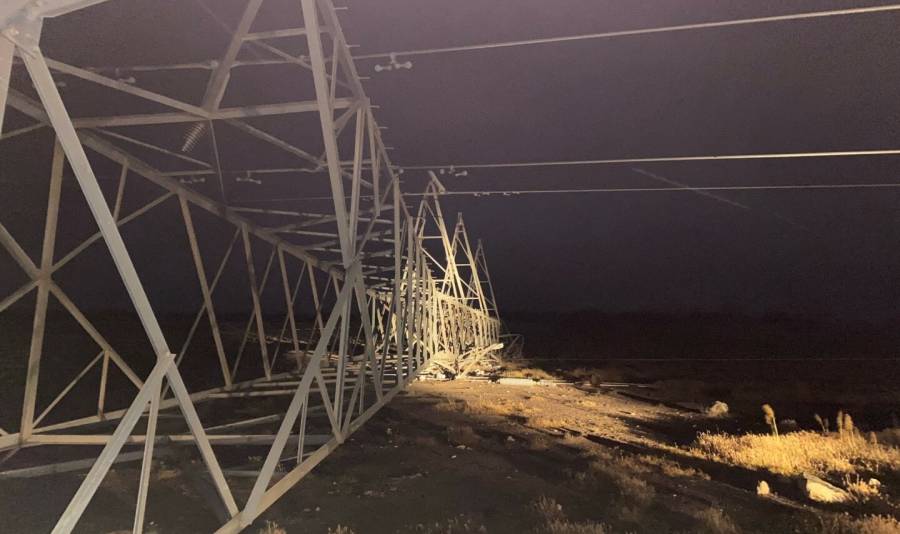
Source: Electranet
On a related note, some will try to pin the blame on renewables for this major blackout event, just like they did a few years back when various parties confused wind power and powerful winds.
Solar Power System Shutoffs
Given the interconnector out of action and with high rooftop solar PV exports forecast, the Australian Energy Market Operator ( AEMO) declared Distributed PV Contingency (DPVC) conditions in SA yesterday. This involved curtailment of some commercial, industrial and residential solar energy generation as a last resort to maintain grid stability.
Since late September 2020, it has been a requirement for all new solar installations in SA to have remote disconnect and reconnect capabilities. This is to be used as a last resort in a situation where grid stability is threatened. But this means there are a bunch of systems installed prior without this feature.
SA Power Networks has a blunter tool in its arsenal to take other systems offline. Here’s what SAPN had to say about the situation in a communication to solar installers.
“With the interconnector down, we are currently islanded from the NEM. With damage to several transmission towers, it could take over week to recover. AEMO have instructed us to maintain a secure operating network, therefore it’s likely we will need to artificially raise voltages in some sub-stations, which will “trip off” customer’s solar systems over the next week.
People won’t lose supply, it just means their solar systems won’t work. If you receive calls from your solar customers, please pass on this message and advise if the issues they are calling about persist after a week to call back.”
As mentioned, this is a really blunt tool. In some cases, inverters were reportedly just constantly rebooting.
For solar owners who were/are affected, the action has caused some confusion as it appears there was a lack of direct notification from SAPN as to what was happening. SAPN also took the unusual step yesterday afternoon of asking solar owners via Facebook to manually shut their systems down. At around 8.30pm, SAPN advised solar systems could be switched back on.
When the dust finally settles from this, SAPN will need to take a good hard look at customer communications in such events. Leaving solar installers with a bunch of calls from confused customers wondering what the heck is happening to their systems is a bit off.
Thinking Batteries To Beat Blackouts? Get The Right Setup
Owners of solar power systems are in the same boat as their neighbours during a blackout due to a safety feature called anti-islanding that protects the grid from further potential damage and the safety of those working to restore power. For a solar household to have electricity supply during a blackout, a home battery is required.
This major blackout event will no doubt have some solar power system owners in South Australia (and elsewhere) thinking more about installing a home battery. But not all solar batteries are equal in terms of backup. For example, some aren’t capable of charging from solar panels during a blackout. A battery with “level 3” backup capability is needed in this scenario.
A home battery is a significant investment. Before diving in and signing on the dotted line, learn everything you need to know about understanding, buying and owning a solar battery; plus common home battery mistakes (and how to avoid them).
If you’re keen on getting home energy storage, SolarQuotes can arrange for quotes from pre-vetted solar battery installers who really know their stuff.
By the way, Tesla Powerwall isn’t the only show in town when it comes to home batteries with advanced backup capabilities. We’ll have a post late this morning on Powerwall alternatives – stay tuned, or sign up for our newsletter.

 RSS - Posts
RSS - Posts



Looks like calm weather on Wednesday morning. If SA is still islanded, the early morning peak may be interesting.
Wednesday is forecast to be cool, but it needs to either be really freezing or a heatwave for South Australia to have trouble meeting its own demand — provided there are no generator breakdowns. But wholesale electricity prices could be extremely high. They are currently expected to be high tomorrow morning.
I’m in an area without power, my panels have been switched off, but even with a powerwall 2, I don’t have the option to power myself, unlike my neighbours, who’ve gone and bought generators. Needless to say, I was unpleasantly surprised by this turn of events. Do I have any way of getting my panels switched back on, so they can charge my battery and power my house?
Damien, is your Powerwall 2 configured for off-grid use? Or is the issue that SAPN have control of solar panels so even armageddon proofed houses are offline?
From my (very!) limited understanding of batteries, some are able to continue functioning when the grid goes down and generators should only be required if solar output is ultra-low e.g. persistent multi-day heavy cloud and\or rain.
I believe the issue is SAPN/AEMO shutting down solar panel generation while SA is cut off from the NEM. I’ve gone thru hours-long blackouts previously and barely noticed. Was expecting to have the same experience this time around, but unfortunately not. It looks as though solar panel generation will be curtailed until the interconnector is repaired.
Yes, my solar systems was shutoff for 4 hours on Sunday and Monday, roughly 1 pm to 5 pm. Perhaps Tuesday too.
I lost about 24 kWh, roughly $3.60 so a trivial amount.
Nice photo!!!
Seems like now’s a really good time to have an ICEV in SA ;-D
While I saw the link to the ‘battery with “level 3” backup capability’ section of the Buying Batteries article, has SQ done any articles on the cost\challenges\general info on getting a level 3 installed for a 3 phase property?
George Kaplan,
“Seems like now’s a really good time to have an ICEV in SA ;-D”
Have you tried filling your ICEV’s fuel tank at a ‘servo’ during a blackout, George?
Geoff,
blackouts aren’t yet common enough that I have personal experience of trying to get fuel during a blackout. That being said, where manual pumping is an option (really old fashioned ones?), or generators are available (required by legislation in some parts of the world), service stations can continue to function, albeit at a reduced level.
Then again a blackout means EFTPOS won’t work so folk who don’t keep cash on hand are just plain out of luck! For those who prefer cash, or live where cash alternatives are unreliable, that’s not an issue.
It’s really disappointing that these solar shut offs are still ongoing after a week.
I just can’t see how the country can really move to renewables if an interconnector going down means solar systems have to be turned off. Where does the solar electricity go when other states solar numbers increase?